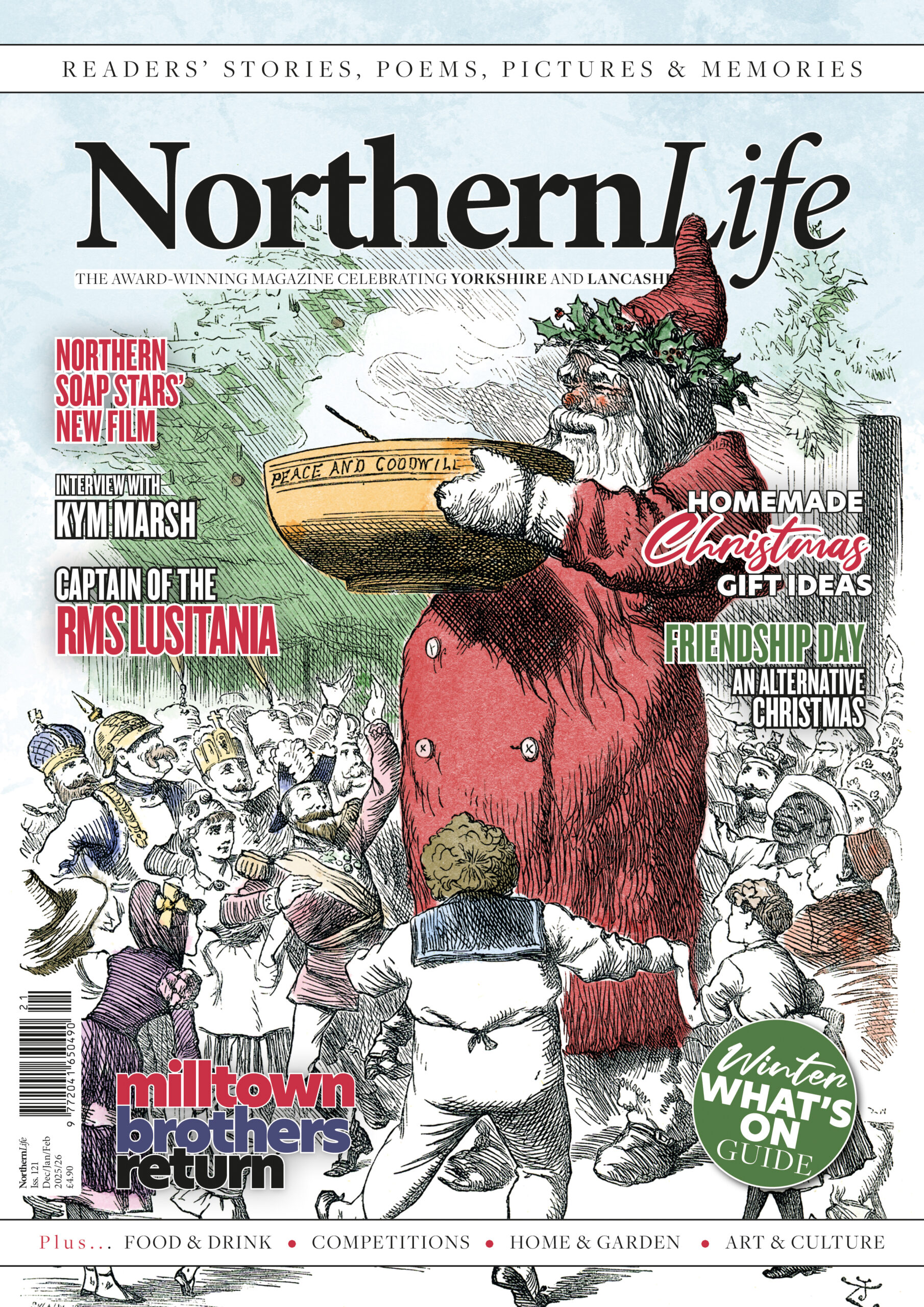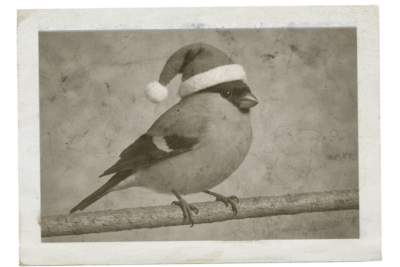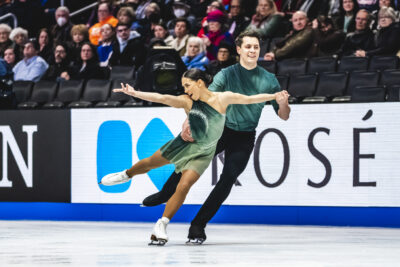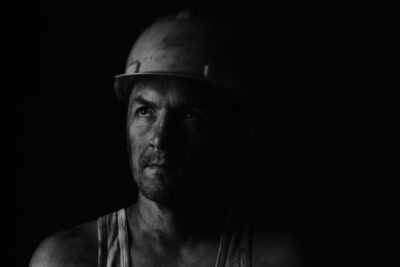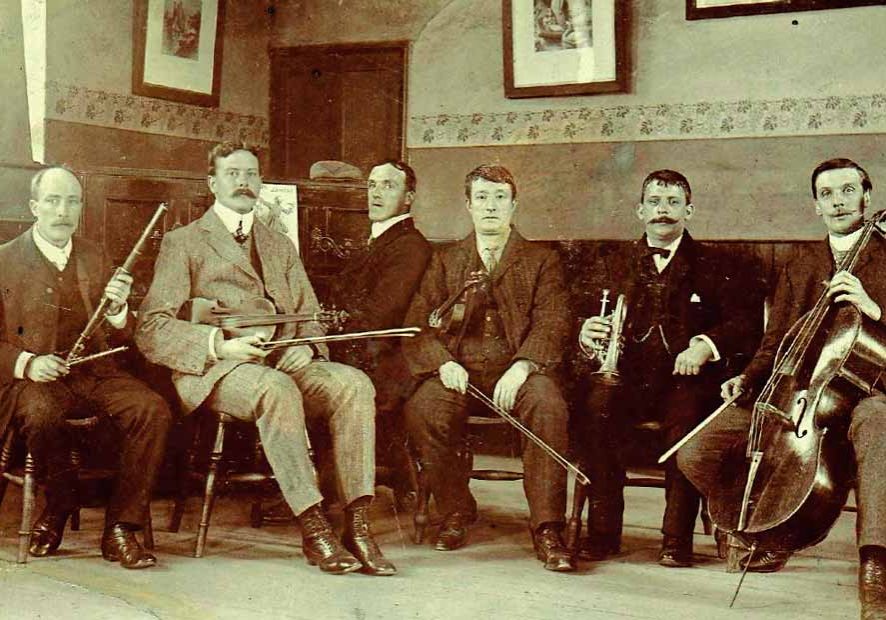
How an old postcard started Dave Middlehurst’s quest for the history of Lancashire’s little dance orchestras.
by Eric Beardsworth
It was just an old postcard at an antiques fair, but it inspired David Middlehurst to embark on an epic quest to trace the history of Lancashire’s little dance orchestras.

The photo that started it all, labelled ‘A Chorley Band’. Despite a huge amount of research and
appeals for information, author Dave Middlehurst has still not been able to identify this six-piece.
Back in the late 19th and early 20th centuries, long before radio and gramophones became widely popular, music was a do-it-yourself affair. There would be a piano in nearly every parlour, where families would gather round to sing ballads and music hall tunes, and groups of enthusiastic amateurs would gather together at church halls to play an assortment of violins, cornets, mandolins, harmonicas and other weird and wonderful instruments such as the serpent.
The dances of the time – mazurkas, schottisches, lancers, varsoviennas and so on – have largely tripped into obscurity. Certainly you won’t see them on Strictly.
Dave, a retired art teacher from Heapey, near Chorley, became fascinated by this aspect of life in Lancashire when he found an old piece of sheet music for ‘The Lancers’, along with a picture postcard of six musicians, labelled merely ‘A Chorley Band.’
- Lakeside rail and ferry station on Windermere is today essentially the same as it was in the early 1900s, when arriving passengers would be greeted by Thomas Bateson’s orchestra, playing on the balcony.
- Seaside piers were enjoying a heyday when this photo of crowded dancers was taken on Central Pier (formerly South Pier) in 1897.
His curiosity led to him to Chorley Library, where he trawled through old newspaper files, mostly The Preston Guardian, to discover more about this social activity. He widened his search throughout the libraries of Lancashire, and as he searched he acquired more old photographs and more information, and was fortunate enough to contact relatives of some of those musicians.
The result of David’s four years of labour is his first book The Lancashire String Band, covering the county from Furness down to Wigan and Rochdale.
Dave’s interest in music isn’t just historical. He plays the melodeon – a type of squeeze box instrument – in a ceilidh ensemble called The Old School Band.
“I’d look round the old halls where we were playing and wondered what kinds of bands might have played there years ago,” says Dave, who taught at Penwortham before retirement gave him the chance to pursue his research.
“A lot of these bands played in church halls, and some of the bigger pubs would have a ballroom upstairs. Some of these musicians would be playing for a pub dance on a Saturday and in a church on Sunday.
“When I found the old photograph, I took it to the library to see if there was a book about these bands, but there wasn’t. There’s plenty of information about the bands from the 1930s and after, but
nothing about these string bands from the earlier years.
- In the mainly male preserve of string bands, Herbert Whittaker’s Ladies Orchestra was something of an exception as the regular attraction at Ashton Gardens Pavilion, St Annes. They played at the Peace Celebration Concert in July 1919 and ‘helped to make the evening a great success’.
- Stanhill, near Oswaldtwistle, noted as the birthplace of ‘ Spinning Jenny’ inventor James Hargreaves, is just a tiny village that nevertheless had its own string band, pictured here in 1907
- It wasn’t all violins and cellos in Lancashire’s small orchestras. This was the St Joseph’s Harmonica Band from Withnell, near Chorley, led by Jack Corrigan during the late 1930s. The band re-formed after the Second World War
“Although they were string bands, there always seemed to be a piano and a cornet in the line-up.
“Many of these musicians in Lancashire worked in the mills during the week, and I discovered that some went on to become music teachers. There were a lot of music lessons available for youngsters growing up.”
“I ended up with three times as much information as I needed for the book. It took a lot of work to make sense of it all. I’ve included a whole chapter about Chorley. Nearly every church there had its own dance band.”
Dave launched his book at Wheelton Village Hall with a concert of music and dialect featuring his friends, and raised £873 for Derian House, the children’s hospice at Astley Village, Chorley.
You can buy The Lancashire String Band: Social Dance Musicians in the County, 1880-1930 from Amazon.
